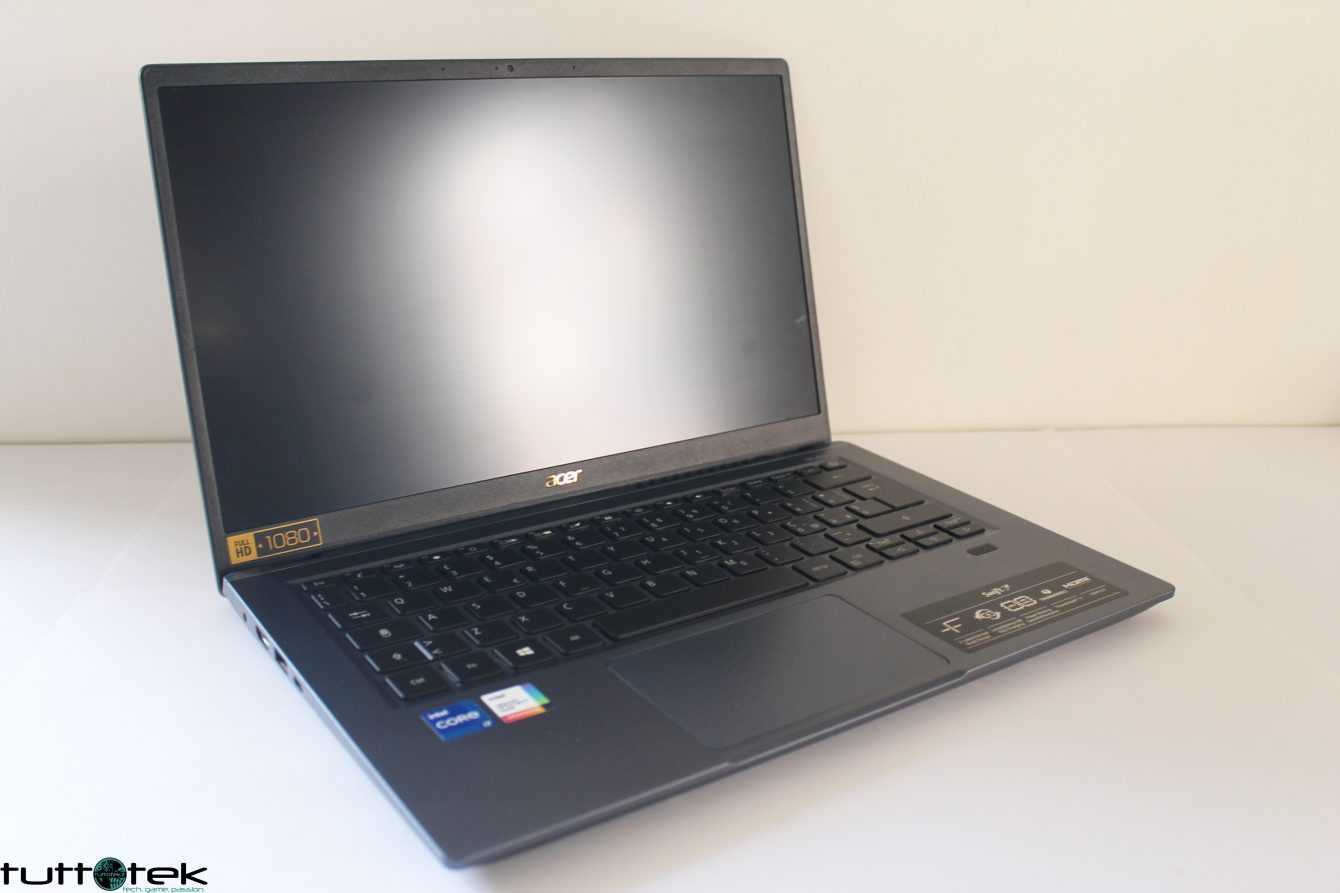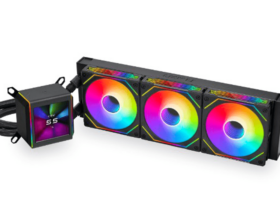Acer Swift 3x review. A machine of only 17.9 mm, which manages to satisfy an audience that is not very demanding, let’s find out why!
Acer Swift 3x it is a product designed by the Taiwanese brand to adapt to all needs, from the professional to the student, or so it is advertised, we will then find out if it is true or not. A 360-degree use what it seeks in part to guarantee Swift 3x. All supplied with one chassis of salt 17.9 mm for just 1,39 kg. But what is out of place in all this is the dedicated graphics Intel Iris Xe 4GB dedicated, but we’ll get to that later.
Before talking about how it goes, what its specifications are, it is correct to frame the nature of the product. Acer presents this laptop as a product suitable for needs such as video editing or photo editing, the truth is that on this price range, we talk about 1,300 euros for the model we tested, it is certainly better.
Also due to the small display, solo Full HD, I do not think it is a suitable product for these uses. However, if we frame this Swift 3x as a laptop for everyday use, office, or typical university use and more generally for the use of multimedia content, here it takes on a different tone, even if, for these uses, 1,300 euros are really a lot.

This Swift is certainly capable of withstanding even heavy work, but it does not do it with extreme lightness. We have the Swift 3X SF314-510G model in our hands, and without getting lost in further talk, let’s get to the heart of the review.
Construction and design | Acer Swift 3x review
Nothing to say about the design, sober but not too much, the rest are exclusively factors of personal taste. The whole structure is made of plastic. Nothing to say about the materials, well made and cared for, even its finish and its treatment make it very pleasant, even if we are not talking about aluminum despite its high price. What is not convincing are two elements; the first resides in the two very small rubber feet placed on the lower edge of the display, the elements that allow it to elevate the laptop when it is placed on a desk (to facilitate the flow of air), they seem really not very stable and after about 10 days of use had already been slightly ruined, I don’t know how long they could have over time.

The second lies in the construction itself, which is not particularly robust. When closed, the display remains very flexible, and above all just a little twist or pressure that emits not exactly pleasant sounds. Especially the monitor hinges.
We then find a medium-sized touchpad, not very big but certainly the best that could be done with such a small space in which to work. In any case, we always find on the touchpad line a welcome fingerprint reader. The display has thin bezels and has a 16:09, by 14 ”format, a cut that makes this one very light and extremely portable machine. In the upper edge of the display body we find a very small webcam with resolution of only 720p for 30 FPS.
In terms of connections, we have on the left side the input for the power supply from 65 Watt, strange not to have found a Type C power input. A door Thunderbolt 4 (USB 3.2 Gen 2 Type-C), una HDMI port, and one porta USB tipe A USB 3.2 Gen 1. On the right side, even if I did not understand the internal reasons for this choice in terms of design, we find an indication LED for the battery level, but the connector is somewhere else, and another relating to the ignition status . Continuing on the same side we have the entrance headphone jack, another porta USB Type A 3.2 Gen 1, two indication LEDs. Finally a Kensington lock entrance.
The design for the dissipation shows itself when the laptop is open, on the right we find the long heatsink grille in plain sight. As I mentioned earlier, part of the design is represented by the opening system that allows you to use the body of the display to lift it and create space between the support surface and the ventilation grids. The heatsink is made from a impeller equipped with fifty-nine 0.3 mm blades, it’s a pair of Heat Pipe in copper D6. The battery and of 58 Wh, we will see shortly how it behaves.

Focus on keyboard and touchpad | Acer Swift 3x review
Starting to talk about the keyboard, I must say that it returns a great feedback, pleasant and comfortable to use. The keys are very small, but they are also well spaced so it is comfortable in writing, thanks also to the very low travel. Perhaps to make the design cleaner it would have been better to insert the fingerprint reader in the power keys, or to make the design more linear to one side of the laptop next to the keyboard.
The keyboard is backlitwhich is good, but it is adjustable on two levels, on and off. IS regularly every 30 seconds it switches off automatically, to turn it back on it should tap on the keyboard, it can be cumbersome and uncomfortable during a working session.
The touchpad still shows a big gap to this day, from what the Apple world offers to what the Windows world offers. Offers the minimum wage. It is not very accurate along the edges, has a slight “play” before reaching the click effective, and sometimes not accurate in dragging, but it is compatible with all Windows precision handling.
Technical data and use test | Acer Swift 3x review
Let’s start talking about the display, we have a 14 ″ FHD IPS panel, with a screen-to-body ratio equal to 85.73%. Furthermore the brightness is only 250 nits, with a 100% sRGB coverage, but the colors are not very vivid, they seem almost dull. The screen is opaque which is a good thing, in fact in direct sunlight you can still work even if it is not among the brightest on the market. Too bad for the resolution, only a 1080p panel is really limiting for graphics work, on the same range we find products equipped with a 2K or even 4K panel.
Turning to audio, we are faced with not exactly crystal clear sound. The audio lacks bass, e the highs are extremely unbalanced, the equalization tends to emphasize the highs, but the sound will depend a lot on the surface on which it is placed, as the speakers are placed at the two lower lateral edges. Moving on to the quality of the webcam, there is basically not much to say about it, I am attaching some test photos.
Acer produces two models for the Swift 3x series, we have the most powerful. Equipped with a Intel i7-1165G7 processor. Late 2020 CPU belonging to the Tiger Lake family, produced a 10 nm, with 4 Core e 8 Thread. It has a maximum consumption of 28W and minimum of 12W, with a maximum frequency of 4.70 GHz and minimum of 2.80 GHz. It has 12 MB of Smart Cache. GPU side, we will certainly not have the performance that we can expect from a dedicated Nvivia or AMD card, but in any case the integrated and dedicated combination of the blue team produces acceptable performance, let’s not expect miracles though. In this case we have one GPU Intel Iris Xe Max con 4G LPDDR4X.
The PC in our possession also mounts 16 GB of RAM, LPDDR4X type. Which as we will see are very fast. We also have 512 GB of SSD, which uses the PCIe 3.0 protocol, really fast, nothing to say, during the review of this Acer Swift 3x the memory has always given satisfaction. To complete the standard equipment Wi-Fi 6 and Bluetooth 5.0.
Net of benchmarks, the impression in everyday use is that this PC is not equipped with a real dedicated GPU. The performance and user experience I had with Premiere and Photoshop did not show significant differences with similar configurations without a dedicated GPU. The rendering times are in fact extremely long with 2K and 4K files, and editing with Full HD files is not the most fluid. Some hesitation is always present during these activities. As Lag phenomena in the processing of high resolution photos on Photoshop.
We carried out different measurements during some specific operations, to analyze the performance of the laptop under stress with certain applications.
In red you can see the tracing referring to the laptop powered by current, in green, the laptop powered by battery.
I made this survey to show you how much the CPU still manages to guarantee, despite the high temperatures, fairly constant performance. The operating peaks you see in the graph are related to Cinebench R20, to be precise I carried out 4 tests, after a few moments. The operating frequency tends to stabilize almost immediately after a very normal spike due to the vdrop. The frequency then, once stabilized on 3.5 GHz, it remains so. I found very similar results with Prime95, even after 20 minutes of use.
However, if we try to carry out the test by recalling the use of the GPU, here things change. In this case in red you can see the trace referred to the battery powered laptop, in green, the current powered laptop.
This test was carried out during a rendering session on Premiere Pro 2020, of an file Full HD da 30 minuti. The track was packed with transitions, video effects, audio tracks, multiple overlapping video tracks, and color correction. The battery-powered laptop allowed mounting, but with a lot of difficulty, the lags were so important that it slowed down the entire operating system. Especially when the GPU comes into play, CPU significantly lowers operating frequencies, down to 2 GHz, from a stable 3.5 GHz when the Intel Iris Xe Max fails to play. When powered on, we tried to export the video, and as you can see in the graph, it stopped abruptly. Thermal Throttling was very important, and when the GPU hit its maximum usage, the CPU didn’t hold up.

What the tests want to tell us in a nutshell is that the system is not always stable. If we ask for the maximum from this processor and, especially from this GPU, we inevitably fall into Thermal Throttling phenomena, the CPU operating frequency drops drastically, and the system makes it difficult to work for long waits. The fan can’t keep everything at bay. The CPU alone probably would have been better than the integrated GPU. I tried to carry out tests dedicated to the graphics sector but the management of Acer immediately intervenes to castrate its performance. Basically, what the graphs say is that the CPU as long as it works alone with its own integrated, despite the high temperatures, still manages to manage a job in an almost “stable” way, with great highs, but without exaggerated problems, but when the GPU comes into play, the PC starts to yield.
Connected to the power, the performances are more intense. But when the GPU intervenes significantly in the work, between 80 and 100% here is the Thermal Throttling, with temperatures ranging between 92 and 95 degrees. Without power you will never reach such degrees also because the power from the very conservative system of Acer is quite reduced.















Leave a Reply
View Comments